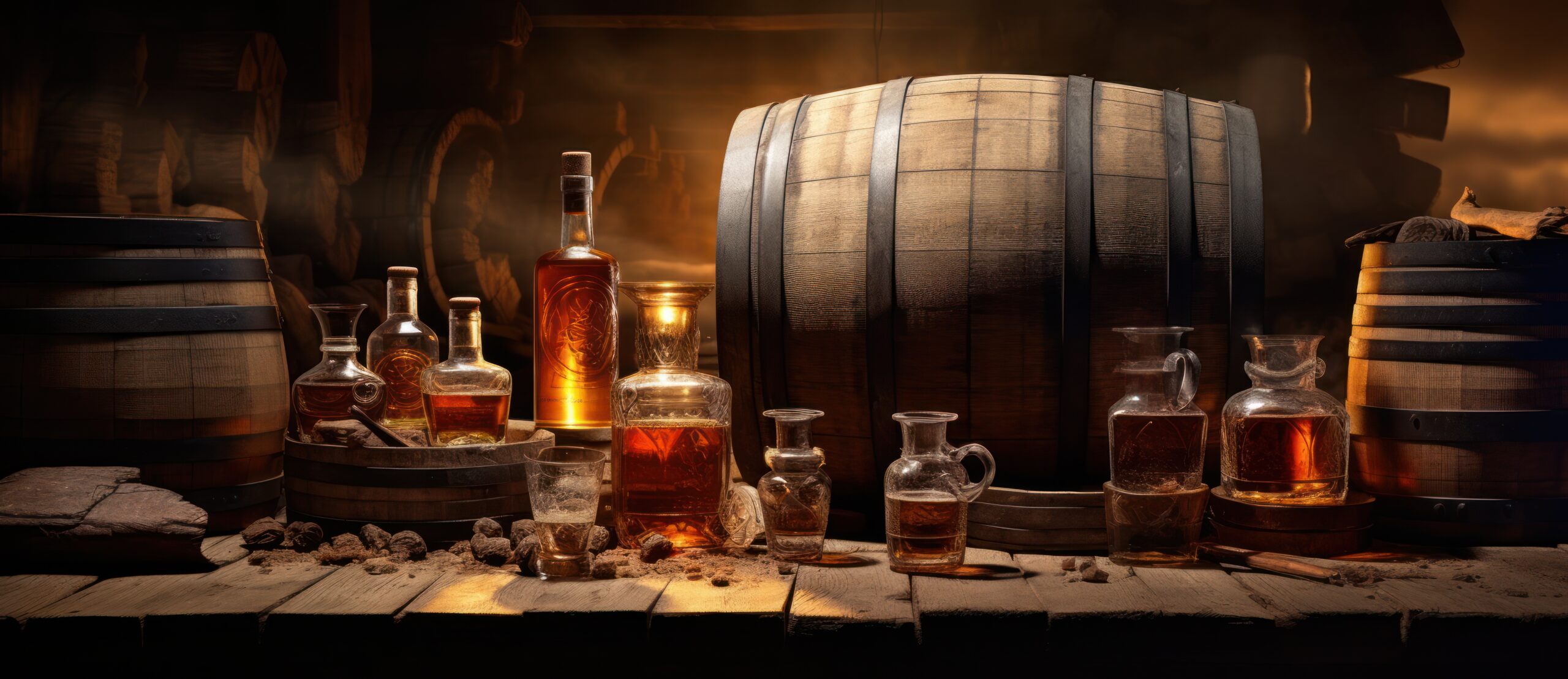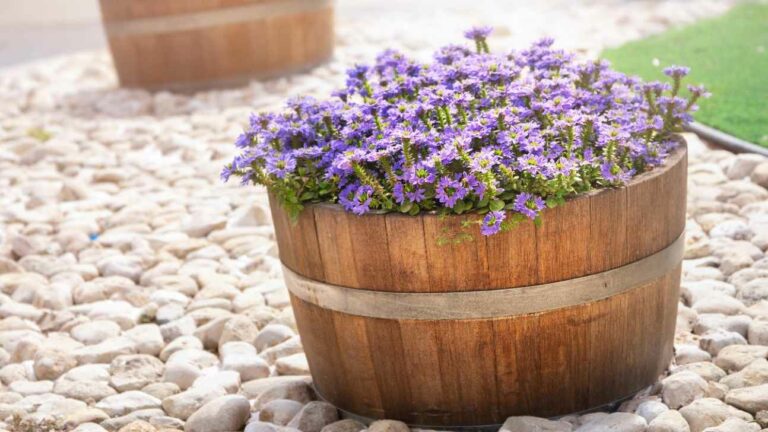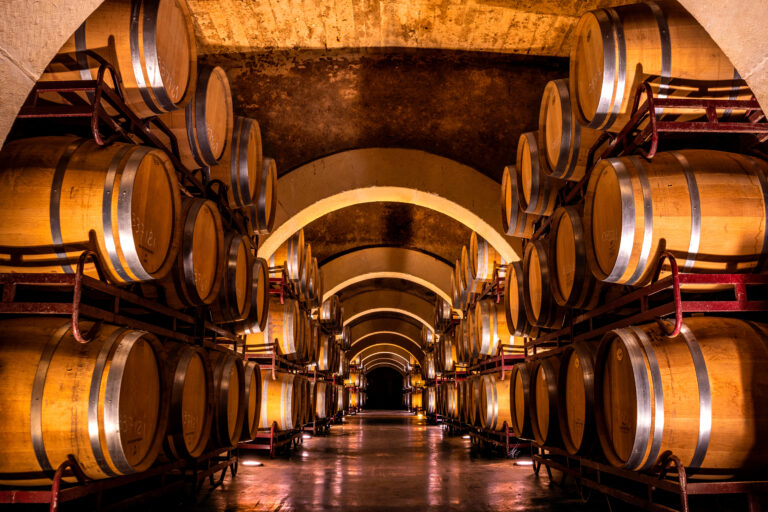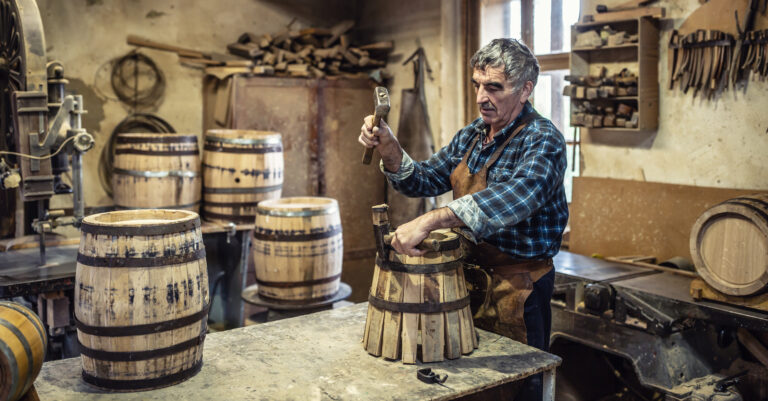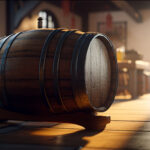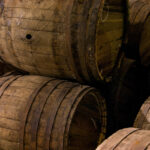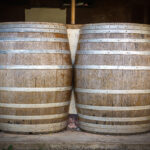Ever wondered why some drinks get cozy in whiskey barrels while others chill in wine barrels? You’ve probably enjoyed the cool flavors that barrel aging gives, but did you know the barrel itself is a big deal? What kind of barrel you use totally changes how your drink tastes, smells, and feels in your mouth. Whiskey and wine barrels might seem like they’re the same, but they give you really different results. Let’s dive into how barrels shape our favorite aged drinks and what makes whiskey and wine barrels different. By the end, you’ll be a barrel-aging whiz and impress your friends with all your new knowledge.
How Whiskey and Wine Barrels Are Made
Whiskey and wine barrels look kind of similar, but they’re made a bit differently.
The Wood
Whiskey barrels are usually made from charred white oak. That char gives whiskey its special flavor and amber color. Wine barrels also use oak, but it’s usually toasted, not charred. Toasting gives the wine more subtle flavors.
The Shape
Whiskey barrels have that classic round, bulging shape, while wine barrels are longer and skinnier. The whiskey barrel’s shape means more of the drink touches the wood.
The Size
A standard whiskey barrel holds about 53 gallons, while a wine barrel can hold anywhere from 15 to 60 gallons. Wine barrels are bigger, so the wood doesn’t affect the wine’s flavor as much.
The Origins
Lots of whiskey barrels used to hold bourbon, which gives the whiskey hints of vanilla and caramel. Wine barrels are usually made of new oak and can be used for a few years.
So, even though whiskey and wine barrels look pretty similar, those little differences in the wood, size, shape, and where they come from make a big difference in the final drink. Next time you sip some oak-aged whiskey or wine, you’ll appreciate that humble barrel even more!
The Wood Used for Whiskey vs. Wine Barrels
Whiskey barrels almost always use charred American white oak. That char adds flavor and color to the aging whiskey. Wine barrels mostly use French or American oak that’s toasted, not charred.
The type of oak and how much it’s charred or toasted really changes the flavor. American white oak gives whiskey those vanilla, caramel, and spice notes. The heavy char makes it smoky. Toasting the oak for wine is lighter, so it balances the fruit flavors and smells.
Whiskey barrels are usually only used once, while wine barrels can age wine for 3-5 years. Using the barrels again changes the flavor a bit each time. As wine barrels get used more, the oak flavor gets softer.
Basically, the different wood and aging methods for whiskey and wine barrels are meant to go with the different drinks they hold. That’s why whiskey and wine taste so different! Whiskey is bold and strong, while the oak in wine is subtle, letting the fruit flavors shine.
See? There’s way more to barrels than you think. Knowing how they’re made and taken care of makes these drinks even better!
Size Differences Between the Two Types of Barrels
The biggest difference between whiskey and wine barrels is their size. Wine barrels, also called oak casks, are much bigger than whiskey barrels.
Size
A standard wine barrel holds about 60 gallons of wine, while a typical whiskey barrel holds around 30 to 50 gallons of whiskey. Wine barrels are bigger because winemakers usually age wine for longer, from a few months to a few years. Having more wine in the barrel means less of the wine touches the wood, which slows down the aging.
Whiskey barrels are smaller because distillers usually only age whiskey for a few years. The smaller size means more of the whiskey touches the wood, so it gets the flavors from the charred oak faster. Some distillers use different barrels to age their whiskey to get just the right mix of flavors.
So, wine and whiskey need different aging times and flavors, which is why they use different sized barrels. The barrel size really changes how fast the drink ages and what flavors it gets. Both wine and whiskey get special flavors from the oak barrels they’re aged in.
How Whiskey and Wine Interact With the Barrels
When whiskey or wine ages in barrels, the wood adds flavor and color. The alcohol soaks up stuff from the wood, like vanillin, which gives whiskey those vanilla and caramel notes. Wines can get hints of spice, coffee, or chocolate, depending on the oak.
Barrels “breathe,” so a little bit of the drink evaporates and gets oxidized, which makes the flavor and aroma stronger. This is called the “angel’s share.” The longer it ages, the more complex the flavors get.
How charred or toasted the barrel is also changes the flavor. Really charred barrels give you smoky flavors. Barrels that used to hold sherry or port give the drink hints of dried fruit and nuts.
The weather where the barrels are stored matters too. Colder places like Scotland mean the wood and drink react slower. Warmer places like Kentucky speed up aging and make special regional flavors.
Whiskey and wine barrels can be used a few times before they’re done. Each time, the barrel has less of an effect on the flavor and smell. Most distilleries tell you how many times a barrel has been used.
Whether it’s bourbon, Scotch, or cabernet, wooden barrels turn regular alcohol into something amazing. The wood and the drink work together to make something even better than the two parts by themselves.
Charred vs. Uncharred Barrels: Impact on Flavor
Charring barrels, which is basically burning the inside of them a little, really changes the flavor of aged drinks. Charring makes the wood underneath show, which releases smells like vanillin that give the drink flavor. The char also acts like a filter, making the drink smoother.
Uncharred barrels let the natural wood flavors come through. Drinks aged in uncharred barrels tend to taste like fresh-cut wood, cedar, and spice. The wood flavors are stronger without the char.
Lots of distillers use both charred and uncharred barrels to make different layers of flavor in their aged drinks. The uncharred barrels give a base of raw wood flavors, while the charred barrels make it smoother and add hints of vanilla and caramel.
Whether they’re charred or not, barrel aging is super important for making the special flavors of whiskeys, brandies, and other aged drinks. The wood and the drink working together creates something special that gives us those amber colors and rich, layered flavors we love.
New vs. Used Barrels: The Aging Process
New barrels give more flavor to the aging whiskey or wine, while used barrels make the flavor softer.
Aging in new oak barrels makes the drink soak up oak lactones, which give it vanilla, caramel, and spice notes. The oak also releases tannins, which give it body and mouthfeel. When barrels are used again, they can’t give as much oak flavor and aroma. But used barrels still let oxygen interact with the drink, which makes the flavor smoother.
Lots of distilleries and wineries use a mix of new and used barrels to get the right balance of oak flavor and smoothness. Exactly what mix they use depends on what they want the final drink to taste like. For a strong, oaky flavor, they use more new oak barrels. If they want something softer, they use more used barrels.
Some drinks are aged in barrels that were used for other wines or spirits. For example, bourbon aged in used wine barrels, or rum finished in used bourbon barrels. This kind of “cross-utilization” gives complex flavors from the two different drinks that were in the barrel. There are tons of ways to use different barrels and wood types.
Basically, aging in wood barrels, whether they’re new or used, is what gives most wines and spirits their special flavor, color, and smell. Choosing new or used barrels, what kind of barrel, and how long to age it all goes into making a special drink.
Regional Cooperage Styles for Whiskey and Wine
Cooperages (barrel makers) around the world have their own styles, which change the flavors of the whiskeys and wines aged in their barrels.
American Oak
American white oak barrels are popular for aging Bourbon whiskey. The wood gives vanilla, caramel, and spice notes. Cooperages in Kentucky and Tennessee make barrels just for those local whiskeys.
French Oak
French oak barrels, especially from the Limousin and Tronçais forests, are great for aging wine, like Cabernet Sauvignon and Chardonnay. The wood adds cedar, herb, and toasty flavors. The Bordeaux region has cooperages that specialize in barrels for local wines.
Eastern European Oak
Slavonian oak from Croatia is used by some whisky makers, mostly in Scotland. The tight grain of the wood gives the whisky flavors of dried fruit and nuts. Some Scottish cooperages import Slavonian oak for their barrels.
The different woods and coopering styles around the world let distillers and winemakers make all kinds of complex, regionally special flavors in their aged drinks and wines. Choosing the barrel and cooperage is a big part of making unique tastes for people who really know their drinks.
Pros and Cons of Each Type of Barrel
The type of barrel used to age whiskey or wine really changes the flavor. Each type has its own good and bad points:
Oak Barrels
Oak barrels are the most common for aging drinks and wines. They give a special vanilla and spice flavor. But oak barrels are expensive and hard to take care of. They also need a long time to develop complex flavors.
Stainless Steel Barrels
Stainless steel barrels are cheap and easy to clean and take care of. But they don’t add any flavor to the drink. Drinks aged in stainless steel need extra flavoring or longer aging to get complex flavors.
Charred vs. Toasted Barrels
Charring the inside of barrels before filling them makes a smoky, toasted flavor. Toasting barrels means heating them at a lower temperature, which gives a lighter, caramelized flavor. Oak barrels are usually charred, while stainless steel barrels can be charred or toasted.
Basically, what kind of barrel you use depends on your budget, how patient you are, and what flavor you’re going for. Oak barrels might cost a lot, but they can give you amazing results. Stainless steel barrels are more flexible and cheaper, as long as you’re okay with playing around with flavors or waiting longer. It’s up to you!
Frequently Asked Questions About Whiskey and Wine Barrels
What’s the difference between whiskey and wine barrels?
Whiskey barrels are usually made of charred oak, like American white oak. Wine barrels are also usually oak, but they’re not charred. The charring gives whiskey its special flavor and color. Wine barrels let the wine breathe and get smoother.
Why are barrels used for aging?
Barrels are perfect for aging drinks and wines. The oak wood is porous, which lets oxygen in and out. This controlled oxidation helps the drink mature and get complex flavors. The wood also adds its own flavors, like vanilla, caramel, and spice.
How long does aging usually take?
Whiskey and wine can be aged for different lengths of time, depending on the drink. Lots of whiskeys are aged from 3 to 30+ years. Wines are usually aged from 6 months up to 5 years. Longer aging makes the flavor smoother and more complex. Some of the liquid evaporates over time, which is called the “angel’s share.”
What happens during the aging process?
While the whiskey or wine is in the barrels, it’s slowly exposed to oxygen and soaks up stuff from the wood. This makes the flavor softer, changes the color, and creates notes of wood spices, nuts, and vanilla. The liquid expands and contracts when the temperature changes, moving in and out of the wood. The longer it ages, the more complex the flavors get.
How are barrels prepared for reuse?
Barrels used for aging are rarely used more than a few times. To get a barrel ready to use again, it’s re-charred or scraped and re-toasted to bring the wood back to life. Sometimes barrels are first used for bourbon, then for scotch or rum. The flavors from the first use go into the next drink. Barrels might be used 3-4 times before they’re retired.
Final Thoughts
So, now you know all about whiskey barrels versus wine barrels. They’re both made of oak and used to age alcohol, but the differences in wood type, char level, and aging time make two very different drinks. Whiskey barrels give deeper flavors from the wood and longer aging, making a warm, complex drink. Wine barrels give lighter, fruitier flavors in less time. At the end of the day, it’s all about what you like. Whether you love the strong oak and spice of aged whiskey or the bright fruit notes of wine, barrels are super important for making those special flavors we all love. Now you can relax, pour yourself a glass of your favorite barrel-aged drink, and enjoy!
